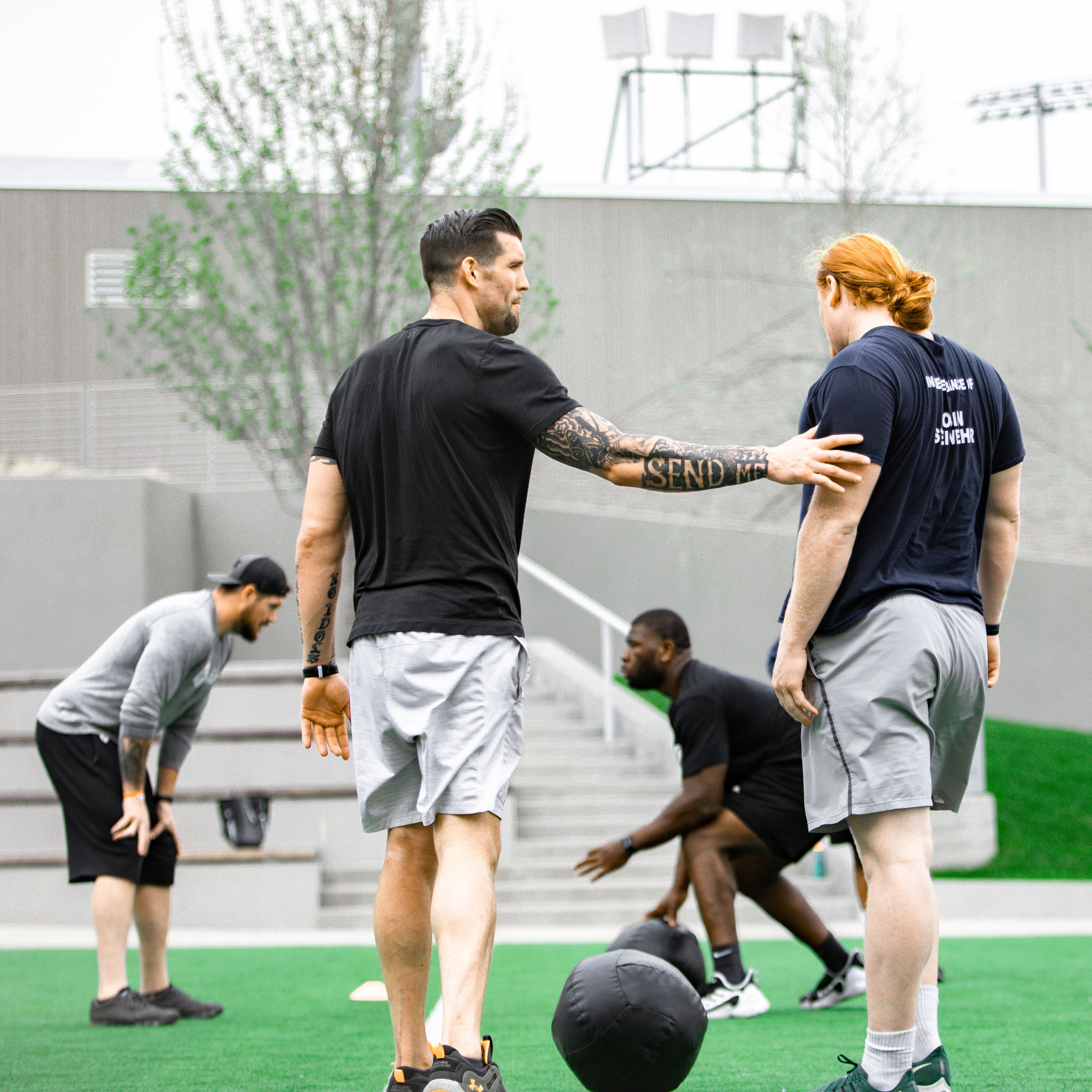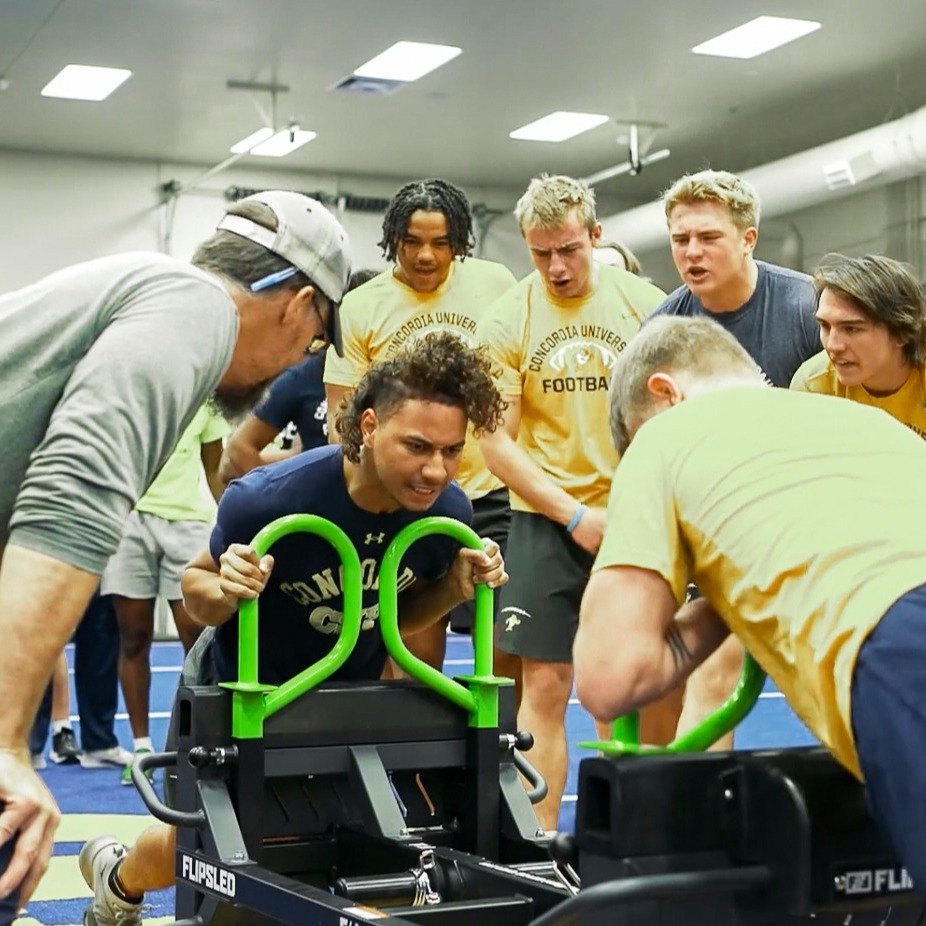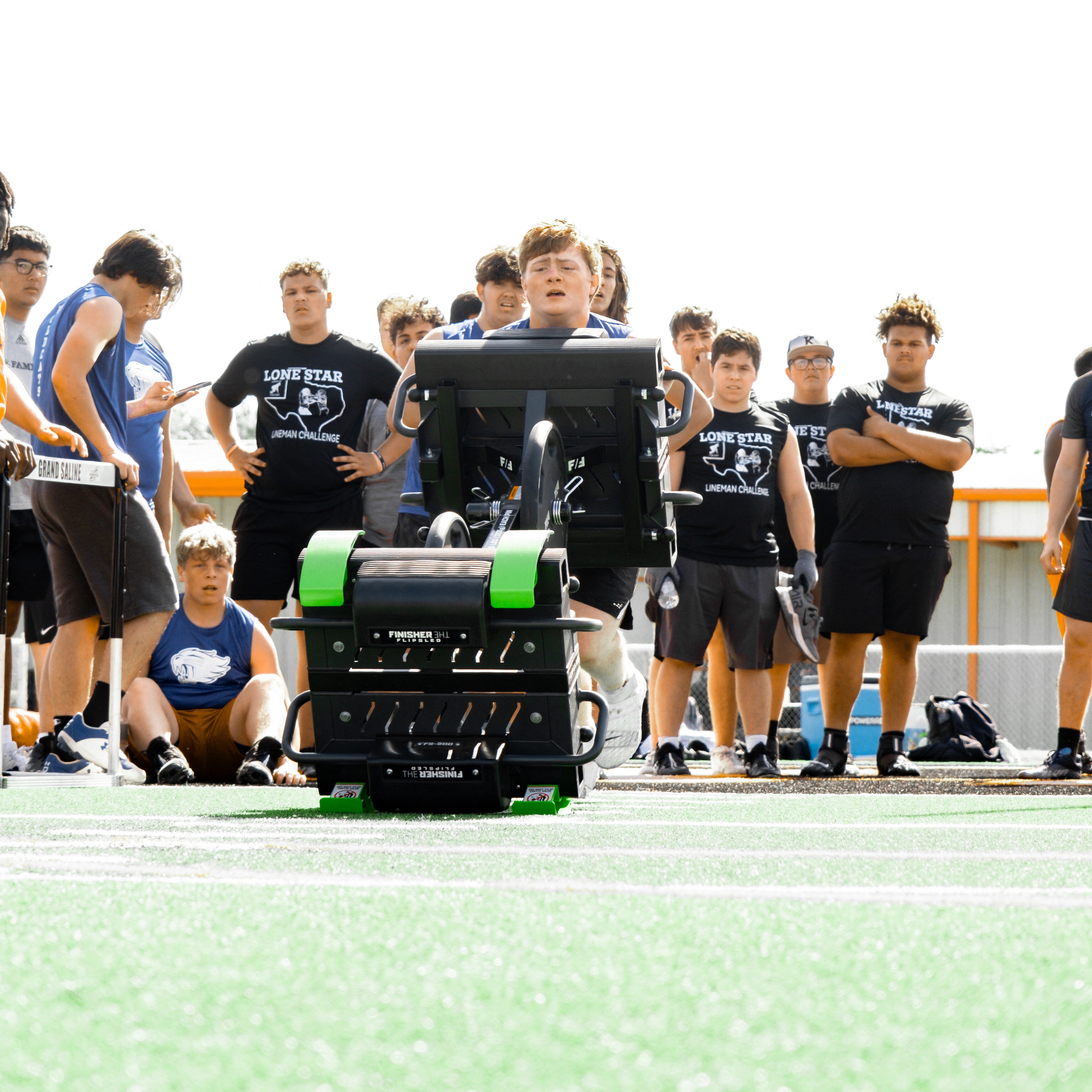Any coach will tell you that to win a football game, you need to win the trenches. But how do you win at the line of scrimmage? With linemen who can deliver power and speed with good fundamentals and strong technique, of course. Linemen on both sides of the ball need velocity and power to win their matchup and help their team succeed, but how do you train linemen for both?
In our coaching and training guide, we’ll explain the many ways to train football linemen for speed and strength so that they can bring balance and power to every play. We’ll also explain the innovative FlipSled and how it can help coaches train their players in power development.
The FlipSled Advantage in Building Lineman Power
When it comes to building well-balanced athletic power, no tools match the innovation and functionality of the FlipSled. Designed for linemen, this patented training powerhouse takes game-ready movements like pushing, flipping, and finishing and refines them to develop explosive power, speed, and control. From triple extension training to real-time sled pushing, this athletic power development equipment arms athletes with tools to replicate on-field mechanics.
The FlipSled’s ability to isolate essential components like leg drive, hip power, and violent finishing makes it an invaluable resource for those ready to elevate their game. Whether you’re refining your linemen’s pancake blocks or helping them fire off the line faster, FlipSled training ensures every rep directly translates into game-day dominance.
Why Speed and Strength Go Hand-in-Hand
For football linemen, sheer strength without quick reaction time is simply a missed block or tackle waiting to happen. Similarly, speed without the power to drive through contact won’t win any battles in the trenches. Balancing speed and strength helps linemen control the line of scrimmage while maximizing their explosive power to react to fast, unpredictable plays.
This balance also decreases injury risks, supports the development of efficient movement, and ultimately builds versatile athletes who can adapt to a variety of in-game challenges. Coaches need strategies that develop both systems simultaneously rather than in isolation. Below are some ways to train for speed and strength to balance power in football.
1. Focus on Compound Exercises
Strength begins with building a solid foundation, and compound exercises are non-negotiable for linemen. Moves like squats, deadlifts, and bench presses activate multiple muscle groups simultaneously, helping athletes develop total-body strength.
Linemen should think of these exercises as the building blocks for dominating one-on-one battles. They enhance core stability, lower body strength, and upper body power—key factors for maintaining control under pressure. To maximize results, incorporate progressive overload methods, gradually increasing resistance to challenge athletes to perform at their peak.
2. Implement Plyometric Training
Speed isn’t just about quick feet—it’s about explosive power. Incorporating plyometrics into your linemen's training helps develop elastic energy in their muscles, leading to faster reactions and more powerful movements.
Training drills like box jumps, broad jumps, and depth jumps engage fast-twitch muscle fibers, which are essential for accelerating into blocks and changing directions. Using tools like the FlipSled’s versatile configurations can further amplify plyometric performance, helping linemen transition this explosive power to real-game scenarios.
.jpg?width=1200&height=628&name=AirborneAthleticsInc-389678-Power-in-Football-ImageA1%20(1).jpg)
3. Incorporate Speed Drills
To emphasize speed development, add position-specific speed drills to your training regimen. These drills should replicate in-game scenarios, like accelerating off the line, lateral shuffling, or sprint bursts to close gaps.
To add a sense of fun and competition to these drills, consider using sled sprints with the FlipSled. Adjustable weight addition make it easy to increase resistance without sacrificing mechanics. With time, these drills build a faster first step and more dominant tackles.
4. Balance Upper and Lower Body Strength
Linemen require more than just strong legs—they need powerful coordination between their upper and lower body. While leg strength provides propulsion, upper-body power enables them players dominate hand battles and maintain control against defenders.
Balance this strength by combining upper-body exercises (like pull-ups and bench presses) with lower-body staples (like squats and deadlifts). Add in exercises such as sled pushes and simulated drives with the FlipSled to connect these two systems, strengthening the full-body movement for on-field performance.
5. Periodize Training
Follow periods of intense training with recovery phases to ensure your athletes gain strength and speed without burning out. Periodization involves programming sessions to alternate between different training focuses like hypertrophy, maximal strength, power, and recovery.
For example, spend three weeks building raw strength before transitioning into explosive power workouts. This approach prevents overtraining while steadily improving athletic performance across the board.
6. Emphasize Core Strength
Core stability is not just about abs—it’s a critical component of balance, leverage, and power transfer. Without a strong core, a lineman cannot effectively drive through opponents or absorb external forces.
Train core strength through rotational exercises like medicine ball throws and anti-rotation drills. Pair them with functional moves like tire flipping using tools like the FlipSled to stabilize the spine and build a more connected athletic frame.
7. Monitor Athlete Fatigue and Recovery
Without proper recovery, athletes can't perform at their peak, and this is particularly crucial for linemen, who endure constant physical contact and strain. While it’s tempting for coaches and athletes to push training to the limit, you want to hone and refine players’ speed and strength instead of burdening their bodies.
Use monitoring tools to track key signs of fatigue, such as heart rate and speed declines during training. Ensure your players, and especially linemen, are following the critical protocols for their bodies to restore and recharge after each training session, like getting proper sleep, eating a healthy diet, engaging in light mobility work, and stretching. Incorporate lighter recovery days into the week to maintain balance and ensure athletes are ready for the next performance phase.
8. Prioritize Proper Technique
An abundance of speed and strength won’t mean a thing without proper technique. You can have the strongest hammer in the world, but if you don’t know how to swing it properly, you’ll miss your target and possibly hurt yourself instead. All conditioning and power exercises must emphasize proper biomechanics.
Drill down on key movements like maintaining leverage on the line, driving through the hips, or finishing blocks with controlled aggression. Training equipment like FlipSled removes the guesswork by mirroring real-life mechanics. Its natural hand placements and controlled resistance ensure athletes develop proper movement patterns and generate power while staying injury-free.
Build Balanced Lineman Power With FlipSled
To dominate the line of scrimmage as a lineman, balancing speed and strength is non-negotiable. By integrating functional exercises, speed drills, and progressive recovery strategies into your training program, you’ll create athletes who combine speed and strength to dominate the line of scrimmage.
When you incorporate innovative tools and equipment like the FlipSled, your training gains a competitive edge. Every technique, every drill, and every rep directly translates to performance under the Friday night lights—or on any other stage. Take your lineman training approach to the next level with innovative, game-changing equipment that’s reshaping athletic development. Learn more about how the FlipSled can revolutionize your program today.
You May Also Like
These Related Stories

Why Do I Coach Football?

The Push of War - FlipSled Team Competition

.png?width=2004&height=239&name=FlipSled%20Logo%20HRZ%20WHITE%20(1).png)
